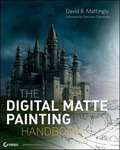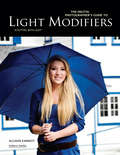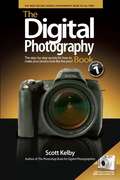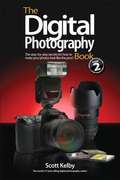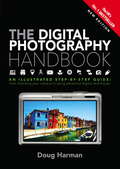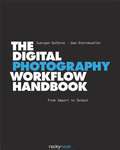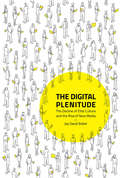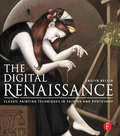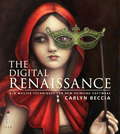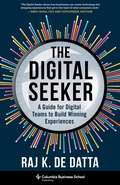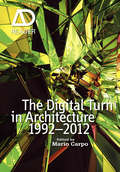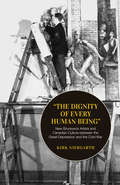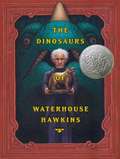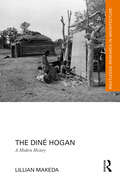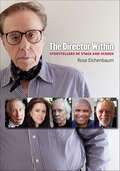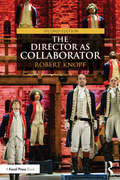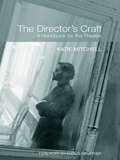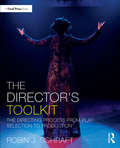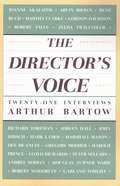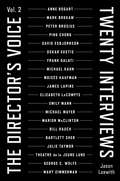- Table View
- List View
The Digital Matte Painting Handbook
by David B. MattinglyThe only how-to guide dedicated to mastering the technique of digital matte painting! Matte painting affords seamless integration between an artist's painting with live action film footage and allows for greater flexibility and creative input in the appearance of movie settings. This unique book reveals a variety of tools and techniques that are both industry and classroom tested and will enhance your existing skill set. Veteran author and instructor David Mattingly walks you through the process of creating a matte painting, starting with rough concept sketches, working out the perspective drawing, adding light and shadow, and texturing all of the elements in the painting. You'll gradually upgrade to using Adobe After Effects and Autodesk Maya in order to fulfill your matte painting vision. Escorts you through the process of creating a matte painting, starting with the initial concept sketch, adding light and shadow, texturing elements, and incorporating motion and depth Author is an experienced matte artist and teacher and shares a plethora of unique industry- and classroom-tested tools and techniques Features helpful step-by-step instructions accompanied by screen shots and photos to illustrate the process of creating a matte painting Whether you're creating a background for a studio production, independent film, TV commercial, or YouTube video, The Digital Matte Painting Handbook helps you successfully complete your project. Note: CD-ROM/DVD and other supplementary materials are not included as part of eBook file.
The Digital Photographer's Guide to Light Modifiers
by Allison EarnestFocusing exclusively on light modifiers and making the most of the least equipment, this in-depth handbook is ideal for use by the beginner and advanced amateurs who wish to take their photography to the next level. Including diagrams and lighting set scenes to facilitate learning and adapting technique, step-by-step critiques of several portrait sessions, and an extensive review of a variety of light modifying tools#151;from barn doors and snoots to gels, umbrellas, and strip boxes#151;this invaluable textbook style book reveals the precise steps for obtaining dimension and depth for indoor and outdoor portrait sessions. This resource is a must-have for beginner photographers looking to discover a treasure trove of fresh, creative lighting inspiration, that will surely help add diversity and creative style to your photography
The Digital Photographer's Guide to Light Modifiers
by Allison EarnestFocusing exclusively on light modifiers and making the most of the least equipment, this in-depth handbook is ideal for use by the beginner and advanced amateurs who wish to take their photography to the next level. Including diagrams and lighting set scenes to facilitate learning and adapting technique, step-by-step critiques of several portrait sessions, and an extensive review of a variety of light modifying tools-from barn doors and snoots to gels, umbrellas, and strip boxes-this invaluable textbook style book reveals the precise steps for obtaining dimension and depth for indoor and outdoor portrait sessions. This resource is a must-have for beginner photographers looking to discover a treasure trove of fresh, creative lighting inspiration, that will surely help add diversity and creative style to your photography
The Digital Photography Book, Volume 1: The Step-by-Step Secrets for How to Make Your Photos Look Like the Pros
by Scott KelbyThis text tackles the most important side of digital photography - how to take professional-quality shots using the same tricks today's top digital pros use.
The Digital Photography Book, Volume 2: The Step-by-Step Secrets for How to Make Your Photos Look Like the Pros
by Scott KelbyThis text tackles the most important side of digital photography - how to take professional-quality shots using the same tricks today's top digital pros.
The Digital Photography Handbook: An Illustrated Step-by-step Guide
by Doug HarmanNeed to know which digital camera to buy? Want to take better photographs and retouch images? Ready to achieve professional results? This updated edition of The Digital Photography Handbook will allow you to make the most of all the advantages your camera has to offer - as well as guiding you through the latest software to enhance your images, and get professional results with every shot. This book includes expert advice on the art of photography (composition, depth of field and how to photograph a variety of subjects), editing and image manipulation software, how to print your images for the best results, developing a portfolio and mastering the rules of copyright. Doug Harman includes the very latest developments in digital technology, equipping you with everything you need to become a photographer. Contents include: Types of camera, Computers and software, Memory, Pixels and magnification, Saving images, Exposure, Composition, Light, Camera modes, Special effects, Manipulating images, Photo apps, Retouching old photos, Printing digital images, Selecting printers and paper, Archiving and the cloud, Making money from your images, Copyright rules and more.
The Digital Photography Handbook: An Illustrated Step-by-step Guide
by Doug HarmanNeed to know which digital camera to buy? Want to take better photographs and retouch images? Ready to achieve professional results? This updated edition of The Digital Photography Handbook will allow you to make the most of all the advantages your camera has to offer - as well as guiding you through the latest software to enhance your images, and get professional results with every shot. This book includes expert advice on the art of photography (composition, depth of field and how to photograph a variety of subjects), editing and image manipulation software, how to print your images for the best results, developing a portfolio and mastering the rules of copyright. Doug Harman includes the very latest developments in digital technology, equipping you with everything you need to become a photographer. Contents include: Types of camera, Computers and software, Memory, Pixels and magnification, Saving images, Exposure, Composition, Light, Camera modes, Special effects, Manipulating images, Photo apps, Retouching old photos, Printing digital images, Selecting printers and paper, Archiving and the cloud, Making money from your images, Copyright rules and more.
The Digital Photography Workflow Handbook: From Import to Output
by Uwe Steinmueller Juergen Gulbins<p>The work that follows the capture of a photographic image - the workflow in the digital darkroom - has a significant effect on the quality of the final image. The Digital Photography Workflow Handbook will help you avoid crucial mistakes as you master the craft of photographic post-processing.<br/><br/>\nThis book provides a step-by-step guide through the photographic workflow, from image capture, editing, and asset management, all the way to the perfect photographic print. The workflow presented in this book focuses on RAW images and is based on two of the most popular and powerful software tools: Adobe Photoshop and Lightroom.<br/><br/>\nThe Digital Photography Workflow Handbook can be used as a reference or textbook by both aspiring amateur and professional photographers, as well as by students.</p>
The Digital Plenitude: The Decline of Elite Culture and the Rise of New Media (The\mit Press Ser.)
by Jay David BolterHow the creative abundance of today's media culture was made possible by the decline of elitism in the arts and the rise of digital media.Media culture today encompasses a universe of forms—websites, video games, blogs, books, films, television and radio programs, magazines, and more—and a multitude of practices that include making, remixing, sharing, and critiquing. This multiplicity is so vast that it cannot be comprehended as a whole. In this book, Jay David Bolter traces the roots of our media multiverse to two developments in the second half of the twentieth century: the decline of elite art and the rise of digital media. Bolter explains that we no longer have a collective belief in “Culture with a capital C.” The hierarchies that ranked, for example, classical music as more important than pop, literary novels as more worthy than comic books, and television and movies as unserious have broken down. The art formerly known as high takes its place in the media plenitude. The elite culture of the twentieth century has left its mark on our current media landscape in the form of what Bolter calls “popular modernism.” Meanwhile, new forms of digital media have emerged and magnified these changes, offering new platforms for communication and expression.Bolter outlines a series of dichotomies that characterize our current media culture: catharsis and flow, the continuous rhythm of digital experience; remix (fueled by the internet's vast resources for sampling and mixing) and originality; history (not replayable) and simulation (endlessly replayable); and social media and coherent politics.
The Digital Renaissance: Classic Painting Techniques in Photoshop and Painter
by Carlyn BecciaPlease note: the website printed in the book [carlynpaints.com] is no longer valid. Please find the author's dedicated book page at: http://www.carlynbeccia.com/carlynpaints/thedigitalrenaissance.html Also, the excercise downloads referred to in the book at: http://www.carlynbeccia.com/carlynpaints/downloads.html The Digital Renaissance teaches you how to translate the methods and skills found in traditional art to the digital medium. By covering fundamental painting principles and the basics of digital software, before moving into tutorials that break down key techniques, professional artist Carlyn Beccia teaches you how to use the tools at hand to paint your own works of art. Each chapter showcases one great painter and analyzes the techniques that set each one apart. These techniques are then imitated in step-by-step tutorials, allowing you to achieve amazingly convincing results and bring your own work to new creative heights.
The Digital Renaissance: Old-Master Techniques in Painter and Photoshop
by Carlyn BecciaThe Digital Renaissance teaches you how to translate the methods and skills found in traditional art to the digital medium. By covering fundamental painting principles and the basics of digital software, before moving into tutorials that break down key techniques, professional artist Carlyn Beccia encourages you to use the tools at hand to paint your own works of art. Each chapter showcases one great painter - the selection includes Michelangelo, Van Gogh, Sargent, Gustav Klimt, Matisse, and Picasso - and analyses the techniques that set each one apart. These techniques are then emulated in step-by-step tutorials, allowing today's digital artist to achieve amazing results in Corel Painter and Adobe Photoshop.
The Digital Seeker: A Guide for Digital Teams to Build Winning Experiences
by Raj K. DattaThe internet was supposed to connect us to endless possibilities. So why do we keep ending up browsing the same old sites and best-seller lists? When sellers don’t offer potential customers a compelling digital experience, consumers miss out on great products—and businesses miss a vital opportunity to grow.Raj K. De Datta, the founder of a company that powers digital-commerce experiences for many of the world’s biggest brands, offers an actionable playbook for companies looking to deliver better digital experiences. His key insight is that exceptional digital experiences are much more than marketplaces. They don’t just serve customers’ transactional needs but rather address the deeper problems for which they seek solutions. They are built on a digital-experience platform that provides agile, personalized, scalable performance. And they are created by product-centric digital teams, not traditional organizations.The Digital Seeker distills key lessons from the compelling stories of innovative businesses: not just tech companies but companies spanning a wide range of industries, including amusement parks, fashion, sports, health care, distribution, and the public sector. De Datta defines and explains the power of the seeker-centric philosophy—translating it into a core operational playbook for digital teams to achieve transformative results.Importantly, this book also offers crucial insights into the impact of the COVID-19 pandemic on our digital lives and the long-term effects it will have on digital experiences of the future.
The Digital Television Revolution: Origins To Outcomes (Palgrave Global Media Policy and Business)
by Michael StarksThis account of the global switch to digital television, from its origins to its emerging outcomes, provides an understanding of how digital television is converging with the Internet. It pictures a future in which the democratic role of the media, freedom of expression and democratic participation can be enhanced.
The Digital Turn in Architecture 1992 - 2012 (AD Reader)
by Mario CarpoNow almost 20 years old, the digital turn in architecture has already gone through several stages and phases. Architectural Design (AD) has captured them all – from folding to cyberspace, nonlinearity and hypersurfaces, from versioning to scripting, emergence, information modelling and parametricism. It has recorded and interpreted the spirit of the times with vivid documentary precision, fostering and often anticipating crucial architectural and theoretical developments. This anthology of AD’s most salient articles is chronologically and thematically arranged to provide a complete historical timeline of the recent rise to pre-eminence of computer-based design and production. Mario Carpo provides an astute overview of the recent history of digital design in his comprehensive introductory essay and in his leaders to each original text. A much needed pedagogical and research tool for students and scholars, this synopsis also relates the present state of digitality in architecture to the history and theory of its recent development and trends, and raises issues of crucial importance for the contemporary practice of the design professions. A comprehensive anthology on digital architecture edited by one of its most eminent scholars in this field, Mario Carpo. Includes seminal texts by Bernard Cache, Peter Eisenman, John Frazer, Charles Jencks, Greg Lynn, Achim Menges and Patrik Schumacher. Features key works by FOA, Frank Gehry, Zaha Hadid, Ali Rahim, Lars Spuybroek/NOX, Kas Oosterhuis and SHoP.
The Digital Twin of Humans: An Interdisciplinary Concept of Digital Working Environments in Industry 4.0
by Günter W. Maier Eckhard Steffen Iris Gräßler Daniel RoesmannThis book provides an interdisciplinary concept of digital working environments in industry 4.0 to enable the implementation of the digital twin of humans.Information and communication technology is penetrating all areas of daily life at a rapid pace in private and professional areas. These technologies enable companies to aggregate huge volumes of data. Collected personal data of employees creates the opportunity of a digital representation of the human being itself, that is conformant with the definition of a digital twin. These digital twins of humans include selected characteristics and behaviour of the humans, that are linked to models, information, and data. According to existing trend studies, the digital twin of humans is a technology that will have a significant impact on the economy, society, and people. It is important to consider the regulatory framework for the use of personal data and threats of misuse.This book will be of use to researchers and professionals in industry.
The Digital Zone System: Taking Control from Capture to Print
by Robert FisherThere is an ongoing debate among photographers whether digital photography processes will ever be able to reach the pinnacle of image quality and tonality achieved by Ansel Adams decades ago. The Digital Zone System (DZS) is an innovative methodology for editing digital images that mimics the Zone System created by Adams. With this book, author Robert Fisher presents a practical guide for editing digital images with a level of control previously unattainable without significant manual work. He walks the reader through the background of Adam's original Zone System and points out similarities to current digital processes including Expose to the Right (ETTR) and high dynamic range imaging (HDRI). Learn to use luminance masks to separate an image into "one-stop" zones of brightness, similar to the zones in Adams's Zone System, that can be worked on individually or in groups. This makes the DZS a powerful tool for converting color images to black and white. You will also gain tremendous control over how color is adjusted in your images by learning to isolate and adjust color in specific targeted areas. These DZS processes are quicker and simpler than the tedious work of using global adjustments and painting in layer masks to isolate the effects of an adjustment layer. In this book, you will learn how to use the Digital Zone System for editing color images, converting images to black and white, and tone mapping HDR images. Also included are brief discussions of color management, setting up Photoshop, printing, and exposure for digital images. The book is richly illustrated with step-by-step screenshots and stunning example images that show the benefits of the Digital Zone System over commonly used digital editing methods. Once mastered, the DZS will allow you to produce a higher level of quality in your images, at a faster pace and with greater ease than ever before.
The Dignity of Every Human Being
by Kirk Niergarth"The Dignity of Every Human Being" studies the vibrant New Brunswick artistic community which challenged "the tyranny of the Group of Seven" with socially-engaged realism in the 1930s and 40s. Using extensive archival and documentary research, Kirk Niergarth follows the work of regional artists such as Jack Humphrey and Miller Brittain, writers such as P.K. Page, and crafts workers such as Kjeld and Erica Deichmann. The book charts the rise and fall of "social modernism" in the Maritimes and the style's deep engagement with the social and economic issues of the Great Depression and the Popular Front.Connecting local, national, and international cultural developments, Niergarth's study documents the attempts of Depression-era artists to question conventional ideas about the nature of art, the social function of artists, and the institutions of Canadian culture. "The Dignity of Every Human Being" records an important and previously unexplored moment in Canadian cultural history.
The Dinosaurs of Waterhouse Hawkins
by Barbara KerleyNot until the mid 1800s were dinosaurs heard of in Victorian England. But when artist Waterhouse Hawkins built the first life-size models of dinosaurs in his native England, and later in America, he dazzled the world with his awe-inspiring creations. The author and illustrator present a story of consuming passion, triumph, loss, and a remarkable legacy that lives on today. Full-color illustrations.
The Diné Hogan: A Modern History (Routledge Research in Architecture)
by Lillian MakedaOver the course of their history, the Navajo (Diné) have constructed many types of architecture, but during the 20th century, one building emerged to become a powerful and inspiring symbol of tribal culture. This book describes the rise of the octagonal stacked-log hogan as the most important architectural form among the Diné.The Navajo Nation is the largest Indian reservation in the United States and encompasses territory from within Arizona, New Mexico, and Utah, where thousands of Native American homes, called hogans, dot the landscape. Almost all of these buildings are octagonal. Whether built from plywood nailed onto a wood frame or with other kinds of timber construction, octagonal hogans derive from the stacked-log hogan, a form which came to prominence around the middle of the last century. The stacked-log hogan has also influenced public architecture, and virtually every Diné community on the reservation has a school, senior center, office building, or community center that intentionally evokes it. Although the octagon recurs as a theme across the Navajo reservation, the inventiveness of vernacular builders and professional architects alike has produced a wide range of octagonally inspired architecture. Previous publications about Navajo material culture have emphasized weaving and metalwork, overlooking the importance of the tribe’s built environment. But, populated by an array of octagonal public buildings and by the hogan – one of the few Indigenous dwellings still in use during the 21st century – the Navajo Nation maintains a deep connection with tradition. This book describes how the hogan has remained at the center of Diné society and become the basis for the most distinctive Native American landscape in the United States.The Diné Hogan: A Modern History will appeal to scholarly and educated readers interested in Native American history and American architecture. It is also well suited to a broad selection of college courses in American studies, cultural geography, Native American art, and Native American architecture.
The Director Within: Storytellers of Stage and Screen
by Rose EichenbaumIn Rose Eichenbaum's latest book on the confluence of art making and human expression, she sits down with thirty-five modern day storytellers—the directors of theater, film, and television. Eichenbaum's subjects speak with revealing clarity about the entertainment industry, the role and life of the director, and how theatrical and cinematic storytelling impacts our culture and our lives. The Director Within includes interviews with Peter Bogdanovich (The Last Picture Show), Julie Taymor (The Lion King), Mel Brooks (Blazing Saddles), Tim Van Patten (The Sopranos, Boardwalk Empire), Hal Prince (The Phantom of the Opera), Barry Levinson (Rain Man), and many others. The interviews are skillfully crafted, sensitively executed, and brimming with honesty and insight. The accompanying portraits demonstrate Eichenbaum's mastery of photography and convey the truth, depth, and intimacy of their subjects. The Director Within is an inspirational, informative, and entertaining resource for anyone interested in creativity, art making, and artistic collaboration. The book includes a listing of works from each of the directors.Publication of this book is funded by the Beatrice Fox Auerbach Foundation Fund at the Hartford Foundation for Public Giving.
The Director as Collaborator
by Robert KnopfThe Director as Collaborator teaches essential directing skills while emphasizing how directors and theater productions benefit from collaboration. Good collaboration occurs when the director shares responsibility for the artistic creation with the entire production team, including actors, designers, stage managers, and technical staff. Leadership does not preclude collaboration; in theater, these concepts can and should be complementary. Students will develop their abilities by directing short scenes and plays and by participating in group exercises. New to the second edition: updated interviews, exercises, forms, and appendices new chapter on technology including digital research, previsualization and drafting programs, and web-sharing sites new chapter on devised and ensemble-based works new chapter on immersive theater, including material and exercises on environmental staging and audience–performer interaction
The Director's Craft: A Handbook for the Theatre
by Katie MitchellThe Director's Craft is a unique and completely indispensable step-by-step guide to directing for the stage. Written by one of the most adventurous and respected directors working today, this book will be an essential item in every student and practitioner's kitbag. It provides detailed assistance with each aspect of the varied challenges facing all theatre directors, and does so with startling clarity. It will inspire everyone, from the beginner just starting out to the experienced practitioner looking to reinvigorate their practice. Katie Mitchell shares and explains the key practical tools she uses to approach her work with both actors, production teams, and the text itself. She addresses topics such as: the ideas that underpin a play's text preparing improvizations Twelve Golden Rules for working with actors managing the transition from rehearsal room to theatre analyzing your work after a run has ended. Each chapter concludes with a summary of its critical points, making this an ideal reference work for both directors and actors at any stage of their development.
The Director's Toolkit (The Focal Press Toolkit Series)
by Robin SchraftThe Director’s Toolkit is a comprehensive guide to the role of the theatrical director. Following the chronology of the directing process, the book discusses each stage in precise detail, considering the selection and analysis of the script, the audition process, casting, character development, rehearsals, how to self-evaluate a production and everything in between. Drawing on the author’s own experience in multiple production roles, the book highlights the relationship between the director, stage manager and designer, exploring how the director should be involved in all elements of the production process. Featuring a unique exploration of directing in special circumstances, the book includes chapters on directing nonrealistic plays, musicals, alternative theatre configurations, and directing in an educational environment. The book includes detailed illustrations, step-by-step checklists, and opportunities for further exploration, offering a well-rounded foundation for aspiring directors.
The Director's Voice
by Arthur BartowForemost stage directors describe their working process: JoAnne Akalaitis, Arvin Brown, René Buch, Martha Clarke, Gordon Davidson, Robert Falls, Zelda Fichandler, Richard Foreman, Adrian Hall, John Hirsch, Mark Lamos, Marshall W. Mason, Des McAnuff, Gregory Mosher, Harold S. Prince, Lloyd Richards, Peter Sellars, Andrei Serban, Douglas Turner Ward, Robert Woodruff, and Garland Wright.
The Director's Voice, Vol. 2
by Jason Loewith"Directors today are equipped with a larger toolbox than their forerunners, standing on their shoulders as well as those of pioneers in non-Western theater, experimental visual art, community-based theater, and the ever-evolving commercial theater scene."-- Jason LoewithThis second volume presents a cross-section of the most diverse and dynamic stage directors defining today's American theater, in conversation with director/producer Jason Loewith. A follow-up to the immensely popular first volume, which has sold over eighteen thousand copies, much has changed in the twenty years since The Director's Voice debuted. "The nonprofit model has been turned on its head," Loewith notes. "Institution-building is out for these directors; creating a distinctive voice from a multiplicity of influences is in." Together, these directors sketch a compelling portrait of the art form in the new century.Interviews include: Anne Bogart, Mark Brokaw, Peter Brosius, Ping Chong, David Esbjornson, Oskar Eustis, Frank Galati, Michael Kahn, Moisés Kaufman, James Lapine, Elizabeth LeCompte, Emily Mann, Michael Mayer, Marion McClinton, Bill Rauch, Bartlett Sher, Julie Taymor, Theatre de la Jeune Lune (Barbra Berlovitz, Steven Epps, Vincent Gracieux, Robert Rosen, and Dominique Serrand), George C. Wolfe, and Mary Zimmerman.Jason Loewith is a producer, director, and writer. He has served since 2002 as artistic director of Chicago's Next Theatre Company, where he conceived, co-wrote, and produced Adding Machine: A Musical, which had an award-winning run off-Broadway.
